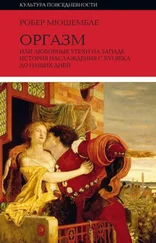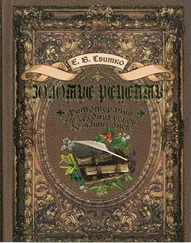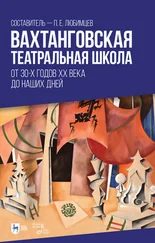Arnheim, R. Art and Visual Perception: A Psychology of the Creative Eye (1954). The New Version. Berkeley and Los Angeles: University of California Press, 1974.
Cavanagh, P. The Artist as Neuroscientist // Nature 434 (2005): 301–307.
Ferretti, S. Cassirer, Panofsky, and Warburg: Symbols, Art, and History. New Haven: Yale University Press, 1989.
Gilbert, C. The Constructive Nature of Visual Processing / In: Principles of Neural Science . 5 thed. E. R. Kandel, J. H. Schwartz, T. Jessell, S. Siegelbaum, J. H. Hudspeth, eds. New York: McGraw-Hill, 2012. Ch. 25.
Gilbert, C. Visual Primitives and Intermediate Level Vision / In: Principles of Neural Science . 5 thed. E. R. Kandel, J. H. Schwartz, T. Jessell, S. Siegelbaum, J. H. Hudspeth, eds. New York: McGraw-Hill, 2012. Ch. 27.
Gombrich, E. Reflections on the History of Art. R. Woodfield, ed. Berkeley, CA: University of California Press, 1987.
Kris, E. Psychoanalytic Explorations in Art. New York: International Universities Press, 1952.
Mamassian, P. Ambiguities and conventions in the perception of visual art // Vision Research 48 (2008): 2143–2153.
Miller, E., and J. P. Cohen An integrative theory of prefrontal cortex function // Annual Review of Neuroscience 24 (2001): 67–202.
Milner, B. The medial temporal lobe amnesiac syndrome // Psychiatric Clinics of North America 28 (3) 2005: 599–611.
Pavlov, I. P. Conditioned Reflexes: An Investigation of the Physiological Activity of the Cerebral Cortex. London: Oxford University Press, 1927.
Polanyi, M., and H. Prosch Meaning. Chicago: University of Chicago Press, 1975.
Riegl, A. The Group Portraiture of Holland. Intro. by W. Kemp. Los Angeles: Getty Research Institute for the History of Art and the Humanities, 1999.
Rock, I. Perception. San Francisco: W. H. Freeman, 1984.
Tomita, H., Ohbayashi, M., Nakahara, K., Hasegawa, I., and Y. Miyashita Top-down signal from prefrontal cortex in executive control of memory retrieval // Nature 401 (1999): 699–703.
Глава 19. Деконструкция эмоциональных
состояний: поиски базовых эмоций
Bostrom, A., Scherf, G., Lambotte, M.-C., Potzl-Malikova, M. Franz Xaver Messerschmidt 1736–1783: From Neoclassicism to Expressionism . Italy: Officina Libraria, 2010.
Bradley, M. M., and D. Sabatinelli Startle reflex modulation: Perception, attention, and emotion / In: Experimental Methods in Neuropsychology . K. Hugdahl, ed. Norwell, MA: Kluwer Academic Publishers, 2003. P. 78.
Changeux, J. P. Art and neuroscience // Leonardo 27 (3) 1994: 189–201.
Chartrand, T. L., and J. A. Bargh The chameleon effect: The perception-behavior link and social interaction // Journal of Personality and Social Psychology 76 (6) 1999: 893–910.
Damasio, A. R. The Feeling of What Happens: Body and Emotion In the Making of Consciousness. Boston: Mariner Books, 1999.
Darwin, C. On the Origin of Species by Means of Natural Selection. New York: Appleton-Century-Crofts, 1859.
Darwin, C. The Descent of Man and Selection in Relation to Sex. New York: Appleton-Century-Crofts, 1871.
Darwin, C. The Expression of the Emotions in Man and Animals. New York: Appleton-Century-Crofts, 1872.
Descartes, R. Treatise on the Passions of the Soul (1694). The Philosophical Works of Descartes. Cambridge University Press. 1967.
Dijkstra, B. Idols of Perversity: Fantasies of Feminine Evil in Fin-de-Siècle Culture. New York and Oxford: Oxford University Press, 1986.
Ekman, P. The argument and evidence about universals in facial expressions of emotion / In: Handbook of Psychophysiology: Emotion and Social Behavior . H. Wagner, A. Manstead, ed. London: John Wiley & Sons, 1989. Pp. 143–164.
Freud, S. An Outline of Psycho-Analysis. The Standard Edition of the Complete Psychological Works of Sigmund Freud. Vol. XXIII. London: Hogarth Press, 1964. Pp. 139–208.
Freud, S. Collected Papers. Vol. IV. London: Hogarth Press and Institute of Psychoanalysis, 1950.
Gay, P. The Freud Reader. New York: W. W. Norton, 1989.
Gombrich, E. H. The Story of Art. London: Phaidon Press, 1955.
Helmholtz, H. von Treatise on Physiological Optics (1910). Southall, J. P. C., editor & translator. New York: Dover, 1925.
Iverson, S., Kupfermann, I., and E. R. Kandel Emotional States and Feelings / In: Principles of Neural Science . 4 thed. E. R. Kandel, J. H. Schwartz, T. Jessell, eds. New York: McGraw-Hill, 2000. Pp. 982–997.
James, W. The Principles of Psychology. Cambridge, MA, and London: Harvard University Press, 1890.
Kant, I. Groundwork for the Metaphysics of Morals (1785). New York: Cambridge University Press, 1998.
Kemball, R. Art in Darwin’s terms // Times Literary Supplement, March 20, 2009.
Kris, E. Psychoanalytic Explorations in Art. New York: International Universities Press, 1952.
Lang, P. J. The emotion probe: Studies of motivation and attention // American Psychologist 50 (5) 1995: 272–285.
Panofsky, E. Studies in Iconology: Humanistic Themes in the Art of the Renaissance. Boulder, CO: Westview Press, 1939.
Pascalis, O., de Haan, M., and C. A. Nelson Is face processing species-specific during the first year of life? // Science Magazine 296 (5571) 2002: 1321–1323.
Rolls, E. T. Emotion Explained. New York: Oxford University Press, 2005.
Silva, P. J. Emotional response to art: From collation and arousal to cognition and emotion // Review of General Psychology 90 (2005): 342–357.
Slaughter, V., and M. Heron Origins and early development of human body knowledge // Monographs of the Society for Research in Child Development 69 (2) 2004: 103–113.
Solms, M., and E. Nersessian Freud’s theory of affect: Questions for neuroscience // Neuropsychoanalysis 1 (1999): 5–14.
Sousa, R. de Emotion / In: The Stanford Encyclopedia of Philosophy. E. N. Zalta, ed. Stanford, CA: Metaphysics Research Lab, 2010.
Strack, F., Martin, L. L., and S. Stepper Inhibiting and facilitating conditions of the human smile: A nonobtrusive test of the facial feedback hypothesis // Journal of Personality and Social Psychology 54 (5) 1988: 768–777.
Глава 20. Передача эмоций
художественными средствами
Aiken, N. E. Physiognomy and art: Approaches from above, below, and sideways // Visual Art Research 10 (1984): 52–65.
Barnett, J. R., Miller, S., and E. Pearce Colour and art: A brief history of pigments // Optics and Laser Technology 38 (2006): 445–453.
Chartrand, T. L., and J. A. Bargh The chameleon effect: The perception-behavior link and social interaction // Journal of Personality and Social Psychology 76 (6) 1999: 893–910.
Damasio, A. Descartes’ Error: Emotion, Reason, and the Human Brain. New York: G. P. Putnam’s Sons, 1994.
Darwin, C. The Expression of the Emotions in Man and Animals. New York: Appleton-Century-Crofts, 1872.
Downing, P. E., Jiang, Y., Shuman, M., and N. Kanwisher A cortical area selective for visual processing of the human body // Science 293 (5539) 2001: 2470–2473.
Ekman, P. Emotions Revealed: Recognizing Faces and Feelings to Improve Communication and Emotional Life. New York: Owl Books, 2003.
Читать дальше
Конец ознакомительного отрывка
Купить книгу







![Франк Трентманн - Эволюция потребления [Как спрос формирует предложение с XV века до наших дней]](/books/403210/frank-trentmann-evolyuciya-potrebleniya-kak-spros-fo-thumb.webp)




